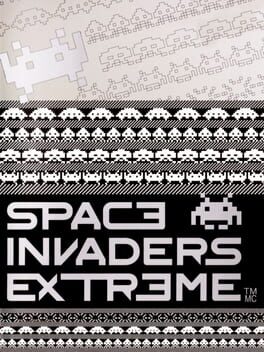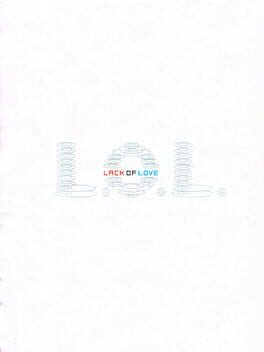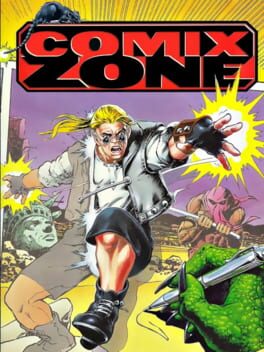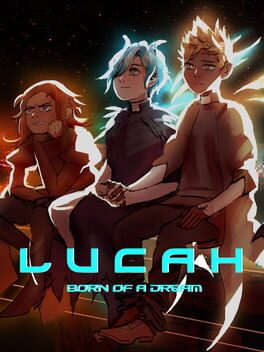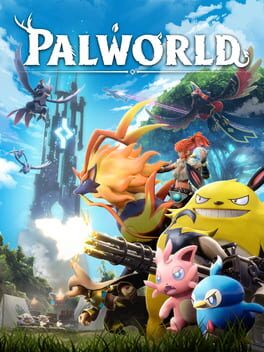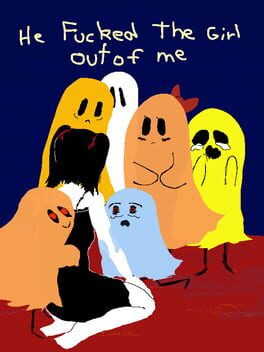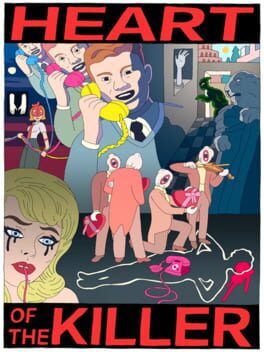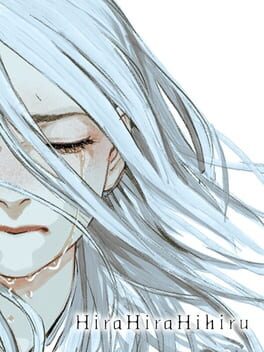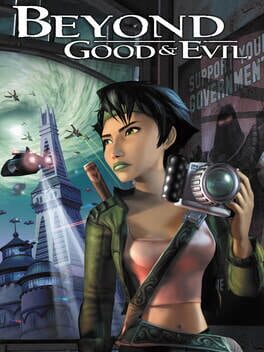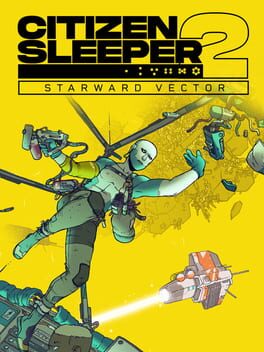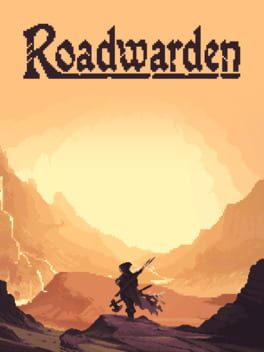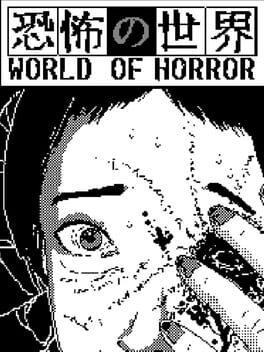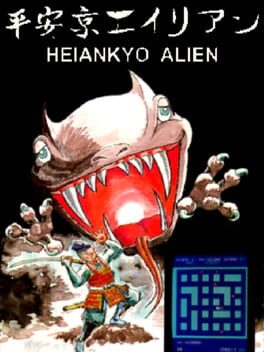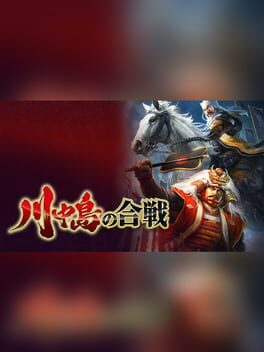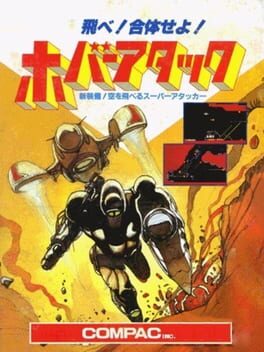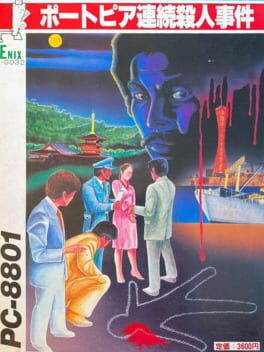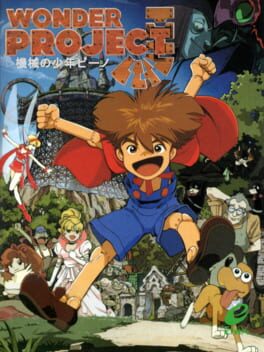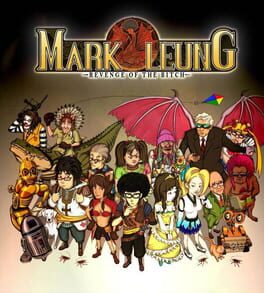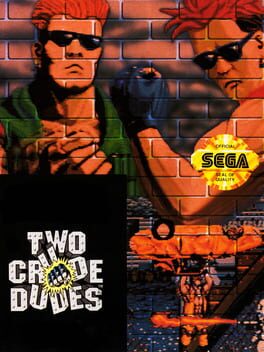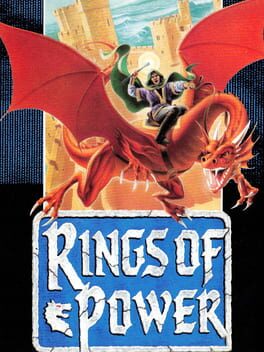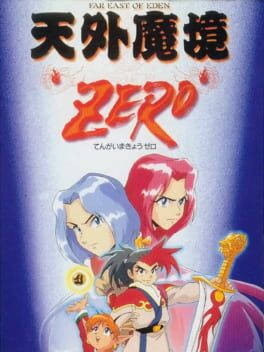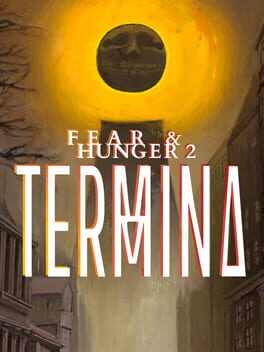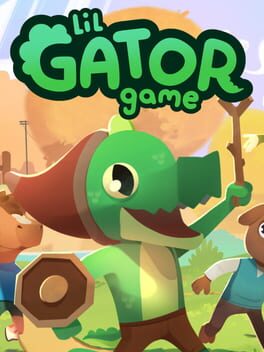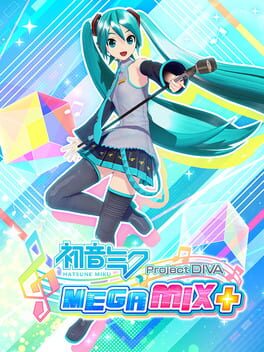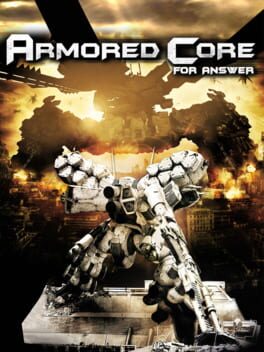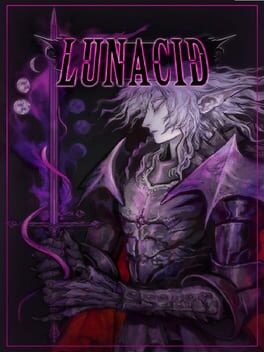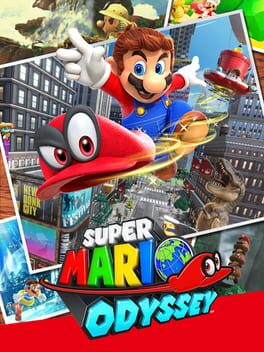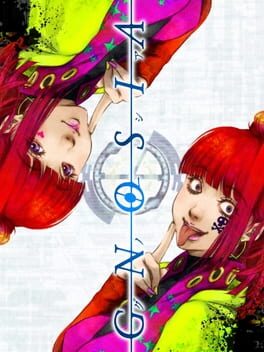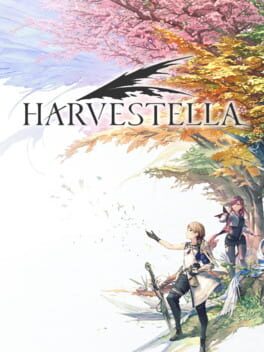CiroCicogna
35 reviews liked by CiroCicogna
I don't know why taito felt like sending space invaders to a rave for its 30th anniversary but it's the best idea they ever had regarding the series
L.O.L.: Lack of Love
2000
From the creators of Moon, the RPG about love, LOL is a wordless game where you wander amongst fellow creatures, observe them, understand them, and ultimately intuit and satisfy their needs. In Moon, the theme is love; in LOL, the action is love.
Comix Zone
1995
This is the coolest game held back by just the dumbest shit like obscenely scarce health items and straight up bonkers amount of unfair traps. It's super short, but like there's a taste of something truly special. Sadly, it's full potential never realized.
The game consists of cool comic stylings, shallow combat, and being RELENTLESSLY MURDERED by literally fucking everything. Bro you can take damage punching metal. What the F U C K. Are we not playing as a wish fulfillment ponytailed asshole why is he getting jabroni'd by the game's environment on top of being constantly jumped by enemies and overwhelming stage hazards.
They want you to like die, and you will no matter how skilled you are. The continues are...out of the question. So you will have to start the whole game over if you get fucked up, so you will. There is nothing you can do about it. It is VERY hard to beat this game legitimately. I had to look up the ending. It turns out he's an incel. Shocking.
btw swinging from panel to panel is SO FUCKING COOL.
The game consists of cool comic stylings, shallow combat, and being RELENTLESSLY MURDERED by literally fucking everything. Bro you can take damage punching metal. What the F U C K. Are we not playing as a wish fulfillment ponytailed asshole why is he getting jabroni'd by the game's environment on top of being constantly jumped by enemies and overwhelming stage hazards.
They want you to like die, and you will no matter how skilled you are. The continues are...out of the question. So you will have to start the whole game over if you get fucked up, so you will. There is nothing you can do about it. It is VERY hard to beat this game legitimately. I had to look up the ending. It turns out he's an incel. Shocking.
btw swinging from panel to panel is SO FUCKING COOL.
My Policy Guidelines
-----------------------------------------------------------
Abstract industrial calamity on the struggle of the repressed queer youth against the forces of theocracy described through electrical wire pulses.
I beat the game and moved over to NG+ difficulty which is where the story really starts to expand and show itself. Considering the length of the game itself (3 to 5 hours) this is already a really cool approach, because it allows for the disinterested player not to be as burdened by the interstitial storytelling elements (told usually through text flashes of on screen poetic language) while operating as a way in which the invested player can reach further into the heart of the world without the burden of excess irritating content. The overall effect is an electric rave of great combat fundamentals set to a blast of haze and color. Great for a satisfying a gamer's midnight.
The game's premise is one of trying to beat a timer, a percentage ticker counting up to your demise, but unlike UNSIGHTED (the last game I spoke about) the only person you overtly have to worry about saving is yourself.
One thing I absolutely have to commend the game for here is the feedback on attacks and the sound effects. Each of the various weapons you use have a 'pacing' to them and the industrial electronic whirls and whips make the fights feel extremely satisfying. This game similar to UNSIGHTED also has a parry mechanic but there's one integral reason which bothers me much less here: The rewinds. At any point during a fight you can use one of your 'rewinds' to set the fight back to the starting health and healing items you had going in, this means that you have plenty of time to both practice and attempt to progress. Learning the mechanics of parrying no longer come as a sacrifice, and for bosses you have a much looser leash for getting the attack patterns right. Adding onto this while parrying does improve your damage output significantly, what an effectively timed parry really does is 'break' through the enemies defense. This 'break' mechanic can come from simply pressuring with your own damage irregardless, using your close range attacks until you run out of stamina and then using your long range familiar to pressure while you recharge stamina. It's never so heuristically clear to try for a parry or punching a lot of damage because most enemies will do a mix of ranged attacks and close attacks meaning waiting around near an enemy in order to parry ends up making no real sense. The result of this is that every fight transforms into a dance, especially when there is more than one enemy you are fighting. Each fight becomes a rhythmic sway of dodges and attacks rather than either frustration or mindless sweeping of enemies outright.
Most people would be quick to compare this game, with its bonfires, lack of explicit hub, stamina management, and parry mechanics as similar to dark souls (ie, being a soulslike). However, I'd like to argue due to the speed of play and importance on not getting overwhelmed by enemies, along with the ability to switch your weapon loadout to provide for incredibly unique play to something more like a top down Bayonetta. Soulslikes for me at least are usually indicated by having high risk systems (like dropping/losing a lot of materials on death) and by having a focus on death as an important force in the play experience. Lucah deeply roots for you not to die, you can't spend 10 attempts on a boss because each failure is not a learning moment in itself but a threat of losing entirely. The game is largely balanced around that fact, the bosses are challenging without being needless health sponges, in part because they too are involved in the dance to 'break' their defenses. Once you break their defense you can usually chip out over 20% of their health if not more, and god damn it's damn satisfying every time. The CRACK sound feels like you shattered a bone. The item management is also simplifyed to great effect to, you have some heals and some rewinds that reset at a bonfire, but unlike the souls series which this system may seem most comparable to thats it. As much as I like Dark Souls 1, my least favourite aspect of that game and many games like it is that when you fail in a fight after using an item, for example pine resin, you don't get that item back. Meaning that if you are doing bad you end up having to waste time farming for materials. Inversely those same items can be so strong as to turn fights into complete jokes, which is why the Souls community have termed using these accessibility options disguised as items as 'resinous behavior' or referring to it as 'resin'. Unlike many jokes in the gaming community around difficulty oscillation this one is not as filled with the scorn of overt ableism, because the issue is not so much that you are using an item to make the fight more accessible but rather than its found through a specific niche in game item of utility which would only work in that area/boss or which register the game on the whole so easy as to end fights before you even hear more than 15 seconds of their theme play. People dont harbor nearly this same judgement and humor about equipping armor or increasing the number of flasks. In Lucah, these power imbalances are avoided simply through item simplification making each fight feel that much more cathartic.
One thing I do really like here is that none of the enemies in the game have enemy collision damage. They only hurt you when they attack. It's only on playing games like that I begin to realize just how stupid and damaging to gameplay enemy collision actually can be for a lot of games. The intent of a lot of these systems with their parrying and aggressive play is to be as close to the enemies as you can. In theory then, enemy collision seems like a great way to add a 'risk reward' factor similar to say grazing against bullets in touhou. The reality however is that it incentivizes players to keep their distance and not even bother. Imagine for a moment a fighting game when even touching the enemy player would emit passive damage, that would be immensely unfun right? I believe a lot of game designers probably looked at how a lot of early games like the metroid series did enemy collision damage and assume outright this is the best way to do things, but it barely even makes much sense. It's not like they are covered in thorns so why is that happening? On top of all of that, the 'collision' of enemy hitboxes are not always clear so it becomes yet another irritation. For platformers this system makes a lot of sense but not so much for action fighters. Overall what I'm complimenting the game for is reducing and simplifying its systems of play.
Now I want to move to a few slightly passive criticisms that have halted the game from getting a perfect score. The games length is quite short so while these criticisms may seem petty I think they are overall justifiable since they are much more likely to stick out like a sore thumb. I will also double these issues with recommendations to players in order to alleviate these potential issues.
Firstly there's an area in the 4th verse where you have to input a code in order to open a door. If you don't have the code insanely strong enemies will appear and wreck your shit. My issue here is that there's no way to leave the fight once it started. This system of sticking you in an arena cage match with the other enemies usually is great, but the problem here is that the only way to leave this area is to die and lose a lot of time on the clock. You can also beat through the enemies if you're good enough and I did but 2 new problems present itself if this happens. The 'code' for unlocking takes significantly less time than it does to brute force through the lock, registering it a waste of time, and because the only way to leave is to die it takes away from the perseverance. Simultaneously even if you do brute force, there's still more enemies on the other side and if you die to them before reaching the next bonfire the code resets and you cant get through. The way to fix this is simple: just let me leave the area after I trigger the code! Anyway I had to close the game and reopen it after I found out the code reset because I didn't want to waste time dying. Not a huge deal in the grand scheme of things but certainly felt like a bit of an oversight. If you play the game yourself and activate that code by accident just die and then go somewhere else, it'll be fine.
There's a colosseum arena in verse 6 in which you have to dispatch enemies in order to proceed. Most of these fights are so easy that they register as a complete joke, with usually only 1 'phase' to them. It's possible that this is meant to have some thematic implications, as it also doubles as a way to introduce the ranking system. If you do excessively well in a fight you get a ranking at the end (similar to Bayonetta's medal system) which becomes deeply important on replay. However you can already get tutorialized through this system by an optional set of challenge fights from a trainer, so I feel like the actual colosseum portion could have been made significantly more difficult. I'm thinking particularly here of how rewarding the length and multiple phases were in something like Hollow Knights colosseum, and while that length wouldn't work for this game it would have been a great way to add more timer anxiety to the back half of the game.
Another issue is the end game fights. In the 8th verse your timer is automatically set to 75% to add extra tension. The problem is that this final area is a tower climb through an arduous gauntlet of about 6 demanding fights in a row, bookended by a long elevator ride so if you start running into problems here and die even twice it's not unlikely you will lose to time before you can see the end fights out. This didn't happen to me but I can only imagine losing at this point in the game would be deeply irritating and disappointing. My recommendation here is to use the accessibility options to make the game easier (particularly adding health and making enemies weaker) at this point if the idea of losing in the last act in this way would feel unfair or bother you. This goes ditto for the final boss which I have to admit here is the only point where the accusations of a boss feeling like a health sponge has merit. One aspect I don't like about the game all that much is that it hides from you the actual health of the bosses you fight, the enemies 'power up' at the end of clearing a health bar and resets. Instead I feel like they could have just rolled it all into 1 health bar with those threshold points so that you know how sparingly you need to use rerolls or healing. This is the functional difference for why say Radahn felt like a cathartic and rewarding fight and Elden Ring whereas a lot of the other 'power up' bosses felt frustrating and bullshit. It's this old mechanic of introducing spectacle and awe at the expense of player fairness, and my appreciation is very much in the latter camp. I will say that the final boss isn't timer based but it makes it even more awkward when you die. Usually you're rolled back a bonfire and time is added but at this point it gives you a prompt of whether you want to fight the boss from this 'scene' or start again which really feels artificial. They could have just put a bonfire at the start of the final sequence on the walk in to alleviate this, without breaking the narrative much at all.
That being said, one 'weirdo opinion' I started to gain from playing this, is that maybe players are given so much knowledge and information in the first place that its spoiled us a little. Every piece of player information fights with the immersion of the game environment, and this is often why the 'games' I talk about the most tend to be walking simulators and visual novels, because a subconcious part of me wants immersion over bland information mechanics. To bring this back to Lucah, when you attack enemies numbers fly out as if you're playing some SHMUP, with the indication being to let you know comparatively how much damage your weapons are doing, you can equip a virtue (basically the modulated 'skills' using a maximum point threshold). That tells you how much health they have. For me I got so enamored with the games sketchy abstractions and electrified colours that these number pop ups got on my nerves and so did actually the bosses health. In a lot of the early final fantasy games, the enemy and boss health wasn't given at all and in contrast to this feeling of frustration it instead felt tense and unique. You would be able to approximate just how much damage it takes to kill an enemy you've seen before but every new enemy would feel authentically bizzare and unknown. This thrill from player non-knowledge also did not really affect the player negatively much at all since for the most part there would be enough tools that taking down fights wasn't that hard regardless. I recognized that maybe both in pursuit of simplicity and immersion over 'information' I turned off the enemies UI. While I would actively recommend people give turning enemy UI off a try, a part of me also thinks the game should have had this turned off automatically to start anyway leaving this instead as yet another accessibility option. It would have a thematic effect to, with the themes of surveillance allowing for the enemies to seem like they know more about you than you do them. With all that said though, just due to some of the attacks the final boss of the game gives its less an issue of 'unfair health' so much as it is that the final boss can burst out damage and give you no reasonable room to pressure, especially in its 'third phase'. This may seem like a paragraph of pure contradiction considering what I said previously, but perhaps the best was to settle this contradiction is to say that I care about immersion but dont care about 'spectacles' of difficulty. The multiple phase difficulty with a 'burst' of difficulty at the end lies both to the 'information' player and the 'immersion' player. For the immersion player, one of the best things that Fromsoft actually revealed to the player in their early work, and to gaming culture as a whole. Is that bosses dont need to get stronger in order to be rewarding to narrative function. Bosses like the phenomenal Maiden Astrea in Demon Souls and the Great Wolf in Dark Souls indicate that a boss getting weaker can be deeply cathartic for both players. That's not to say that every boss should get weaker, but not every boss needs to be increasingly demanding through concealed information. What having a lot of multi phase boss fights in a game does is make players play with far too much caution and distance. In a game like this the last thing you want to incentivize is passive play and distance which is why I find these sorts of bosses so irritating. With that said outside of the final boss this issue is mainly a non problem as the reset item allows you plenty of time to practice out those fights. You may end up losing once or twice but you probably wont get hardstuck by any means. If you do though feel free to use the accessibility functions liberally.
Finally I want to touch on the NG+. The NG+ is awesome in concept. New story information is given to the player, the timer goes much faster because now you know where everything is and dont need to fish for items (since all your weapons and virtues roll over), and the ranking mechanic returns with force here. You can get rid of time from adding to the timer by doing really well in fights, with bonuses for not getting hit and completing the fights quickly. But the problem is you can farm fights out by resting at a bonfire and then redoing the easy fights, allowing you to make the timer a non issue during replay. Now I think that there's a punish system for this, as it means that your rank from your last attempt is mitigated to a bit less than before, but its still useful enough for farming time that it doesn't matter enough. The best way in my view to amend this would have been to prevent respawning enemies, as the 'failure' for death adds such an extreme amount of time (one tenth of the bar) that respawning the enemies would be unnecessary anyway. The way it is not renders the NG+ sort of mostly a joke.
With all that said, the combat fundamentals are incredible here, and the story itself is abstracted and yet traumatic in a way that can be emotionally effective without being bleak. The mystique of the game here is to die for and I can't recommend it enough for that reason. There's clearly a lot of focus on the trans experience here in repressing for higher powers and a more interesting 'trauma at the center of the world' framing which just begs to be read into as a literary function. There's no puzzle mechanics to be stressed out by, its a sleek telephone tower of a game in terms of its presentation and effect. While I would usually spend some time analyzing the queer repression themes, due to the already length of this piece, metamorphosing the end of the write up into literary analysis would be at best awkward. A lot of the themes and characters are made overly anxious and edgy, with several of them wishing openly to be dead. I think its probably most comparable in tone to We Know The Devil, a game also about queer repression under theocracy. I would definitely recommend that Visual Novel instead if you want a characterized direct intimate relationship with the plights of youth trauma, but if you're a fan of We Know the Devil already this more mystery oriented dream parable might work as a great double feature there. Overall this is a great diamond in the rough of a game and I'm incredibly excited for the sequel Death of a Wish. The only real filter here is the early game patience you have to have, once you get past the train section in particular its a great ride from there.
-----------------------------------------------------------
Abstract industrial calamity on the struggle of the repressed queer youth against the forces of theocracy described through electrical wire pulses.
I beat the game and moved over to NG+ difficulty which is where the story really starts to expand and show itself. Considering the length of the game itself (3 to 5 hours) this is already a really cool approach, because it allows for the disinterested player not to be as burdened by the interstitial storytelling elements (told usually through text flashes of on screen poetic language) while operating as a way in which the invested player can reach further into the heart of the world without the burden of excess irritating content. The overall effect is an electric rave of great combat fundamentals set to a blast of haze and color. Great for a satisfying a gamer's midnight.
The game's premise is one of trying to beat a timer, a percentage ticker counting up to your demise, but unlike UNSIGHTED (the last game I spoke about) the only person you overtly have to worry about saving is yourself.
One thing I absolutely have to commend the game for here is the feedback on attacks and the sound effects. Each of the various weapons you use have a 'pacing' to them and the industrial electronic whirls and whips make the fights feel extremely satisfying. This game similar to UNSIGHTED also has a parry mechanic but there's one integral reason which bothers me much less here: The rewinds. At any point during a fight you can use one of your 'rewinds' to set the fight back to the starting health and healing items you had going in, this means that you have plenty of time to both practice and attempt to progress. Learning the mechanics of parrying no longer come as a sacrifice, and for bosses you have a much looser leash for getting the attack patterns right. Adding onto this while parrying does improve your damage output significantly, what an effectively timed parry really does is 'break' through the enemies defense. This 'break' mechanic can come from simply pressuring with your own damage irregardless, using your close range attacks until you run out of stamina and then using your long range familiar to pressure while you recharge stamina. It's never so heuristically clear to try for a parry or punching a lot of damage because most enemies will do a mix of ranged attacks and close attacks meaning waiting around near an enemy in order to parry ends up making no real sense. The result of this is that every fight transforms into a dance, especially when there is more than one enemy you are fighting. Each fight becomes a rhythmic sway of dodges and attacks rather than either frustration or mindless sweeping of enemies outright.
Most people would be quick to compare this game, with its bonfires, lack of explicit hub, stamina management, and parry mechanics as similar to dark souls (ie, being a soulslike). However, I'd like to argue due to the speed of play and importance on not getting overwhelmed by enemies, along with the ability to switch your weapon loadout to provide for incredibly unique play to something more like a top down Bayonetta. Soulslikes for me at least are usually indicated by having high risk systems (like dropping/losing a lot of materials on death) and by having a focus on death as an important force in the play experience. Lucah deeply roots for you not to die, you can't spend 10 attempts on a boss because each failure is not a learning moment in itself but a threat of losing entirely. The game is largely balanced around that fact, the bosses are challenging without being needless health sponges, in part because they too are involved in the dance to 'break' their defenses. Once you break their defense you can usually chip out over 20% of their health if not more, and god damn it's damn satisfying every time. The CRACK sound feels like you shattered a bone. The item management is also simplifyed to great effect to, you have some heals and some rewinds that reset at a bonfire, but unlike the souls series which this system may seem most comparable to thats it. As much as I like Dark Souls 1, my least favourite aspect of that game and many games like it is that when you fail in a fight after using an item, for example pine resin, you don't get that item back. Meaning that if you are doing bad you end up having to waste time farming for materials. Inversely those same items can be so strong as to turn fights into complete jokes, which is why the Souls community have termed using these accessibility options disguised as items as 'resinous behavior' or referring to it as 'resin'. Unlike many jokes in the gaming community around difficulty oscillation this one is not as filled with the scorn of overt ableism, because the issue is not so much that you are using an item to make the fight more accessible but rather than its found through a specific niche in game item of utility which would only work in that area/boss or which register the game on the whole so easy as to end fights before you even hear more than 15 seconds of their theme play. People dont harbor nearly this same judgement and humor about equipping armor or increasing the number of flasks. In Lucah, these power imbalances are avoided simply through item simplification making each fight feel that much more cathartic.
One thing I do really like here is that none of the enemies in the game have enemy collision damage. They only hurt you when they attack. It's only on playing games like that I begin to realize just how stupid and damaging to gameplay enemy collision actually can be for a lot of games. The intent of a lot of these systems with their parrying and aggressive play is to be as close to the enemies as you can. In theory then, enemy collision seems like a great way to add a 'risk reward' factor similar to say grazing against bullets in touhou. The reality however is that it incentivizes players to keep their distance and not even bother. Imagine for a moment a fighting game when even touching the enemy player would emit passive damage, that would be immensely unfun right? I believe a lot of game designers probably looked at how a lot of early games like the metroid series did enemy collision damage and assume outright this is the best way to do things, but it barely even makes much sense. It's not like they are covered in thorns so why is that happening? On top of all of that, the 'collision' of enemy hitboxes are not always clear so it becomes yet another irritation. For platformers this system makes a lot of sense but not so much for action fighters. Overall what I'm complimenting the game for is reducing and simplifying its systems of play.
Now I want to move to a few slightly passive criticisms that have halted the game from getting a perfect score. The games length is quite short so while these criticisms may seem petty I think they are overall justifiable since they are much more likely to stick out like a sore thumb. I will also double these issues with recommendations to players in order to alleviate these potential issues.
Firstly there's an area in the 4th verse where you have to input a code in order to open a door. If you don't have the code insanely strong enemies will appear and wreck your shit. My issue here is that there's no way to leave the fight once it started. This system of sticking you in an arena cage match with the other enemies usually is great, but the problem here is that the only way to leave this area is to die and lose a lot of time on the clock. You can also beat through the enemies if you're good enough and I did but 2 new problems present itself if this happens. The 'code' for unlocking takes significantly less time than it does to brute force through the lock, registering it a waste of time, and because the only way to leave is to die it takes away from the perseverance. Simultaneously even if you do brute force, there's still more enemies on the other side and if you die to them before reaching the next bonfire the code resets and you cant get through. The way to fix this is simple: just let me leave the area after I trigger the code! Anyway I had to close the game and reopen it after I found out the code reset because I didn't want to waste time dying. Not a huge deal in the grand scheme of things but certainly felt like a bit of an oversight. If you play the game yourself and activate that code by accident just die and then go somewhere else, it'll be fine.
There's a colosseum arena in verse 6 in which you have to dispatch enemies in order to proceed. Most of these fights are so easy that they register as a complete joke, with usually only 1 'phase' to them. It's possible that this is meant to have some thematic implications, as it also doubles as a way to introduce the ranking system. If you do excessively well in a fight you get a ranking at the end (similar to Bayonetta's medal system) which becomes deeply important on replay. However you can already get tutorialized through this system by an optional set of challenge fights from a trainer, so I feel like the actual colosseum portion could have been made significantly more difficult. I'm thinking particularly here of how rewarding the length and multiple phases were in something like Hollow Knights colosseum, and while that length wouldn't work for this game it would have been a great way to add more timer anxiety to the back half of the game.
Another issue is the end game fights. In the 8th verse your timer is automatically set to 75% to add extra tension. The problem is that this final area is a tower climb through an arduous gauntlet of about 6 demanding fights in a row, bookended by a long elevator ride so if you start running into problems here and die even twice it's not unlikely you will lose to time before you can see the end fights out. This didn't happen to me but I can only imagine losing at this point in the game would be deeply irritating and disappointing. My recommendation here is to use the accessibility options to make the game easier (particularly adding health and making enemies weaker) at this point if the idea of losing in the last act in this way would feel unfair or bother you. This goes ditto for the final boss which I have to admit here is the only point where the accusations of a boss feeling like a health sponge has merit. One aspect I don't like about the game all that much is that it hides from you the actual health of the bosses you fight, the enemies 'power up' at the end of clearing a health bar and resets. Instead I feel like they could have just rolled it all into 1 health bar with those threshold points so that you know how sparingly you need to use rerolls or healing. This is the functional difference for why say Radahn felt like a cathartic and rewarding fight and Elden Ring whereas a lot of the other 'power up' bosses felt frustrating and bullshit. It's this old mechanic of introducing spectacle and awe at the expense of player fairness, and my appreciation is very much in the latter camp. I will say that the final boss isn't timer based but it makes it even more awkward when you die. Usually you're rolled back a bonfire and time is added but at this point it gives you a prompt of whether you want to fight the boss from this 'scene' or start again which really feels artificial. They could have just put a bonfire at the start of the final sequence on the walk in to alleviate this, without breaking the narrative much at all.
That being said, one 'weirdo opinion' I started to gain from playing this, is that maybe players are given so much knowledge and information in the first place that its spoiled us a little. Every piece of player information fights with the immersion of the game environment, and this is often why the 'games' I talk about the most tend to be walking simulators and visual novels, because a subconcious part of me wants immersion over bland information mechanics. To bring this back to Lucah, when you attack enemies numbers fly out as if you're playing some SHMUP, with the indication being to let you know comparatively how much damage your weapons are doing, you can equip a virtue (basically the modulated 'skills' using a maximum point threshold). That tells you how much health they have. For me I got so enamored with the games sketchy abstractions and electrified colours that these number pop ups got on my nerves and so did actually the bosses health. In a lot of the early final fantasy games, the enemy and boss health wasn't given at all and in contrast to this feeling of frustration it instead felt tense and unique. You would be able to approximate just how much damage it takes to kill an enemy you've seen before but every new enemy would feel authentically bizzare and unknown. This thrill from player non-knowledge also did not really affect the player negatively much at all since for the most part there would be enough tools that taking down fights wasn't that hard regardless. I recognized that maybe both in pursuit of simplicity and immersion over 'information' I turned off the enemies UI. While I would actively recommend people give turning enemy UI off a try, a part of me also thinks the game should have had this turned off automatically to start anyway leaving this instead as yet another accessibility option. It would have a thematic effect to, with the themes of surveillance allowing for the enemies to seem like they know more about you than you do them. With all that said though, just due to some of the attacks the final boss of the game gives its less an issue of 'unfair health' so much as it is that the final boss can burst out damage and give you no reasonable room to pressure, especially in its 'third phase'. This may seem like a paragraph of pure contradiction considering what I said previously, but perhaps the best was to settle this contradiction is to say that I care about immersion but dont care about 'spectacles' of difficulty. The multiple phase difficulty with a 'burst' of difficulty at the end lies both to the 'information' player and the 'immersion' player. For the immersion player, one of the best things that Fromsoft actually revealed to the player in their early work, and to gaming culture as a whole. Is that bosses dont need to get stronger in order to be rewarding to narrative function. Bosses like the phenomenal Maiden Astrea in Demon Souls and the Great Wolf in Dark Souls indicate that a boss getting weaker can be deeply cathartic for both players. That's not to say that every boss should get weaker, but not every boss needs to be increasingly demanding through concealed information. What having a lot of multi phase boss fights in a game does is make players play with far too much caution and distance. In a game like this the last thing you want to incentivize is passive play and distance which is why I find these sorts of bosses so irritating. With that said outside of the final boss this issue is mainly a non problem as the reset item allows you plenty of time to practice out those fights. You may end up losing once or twice but you probably wont get hardstuck by any means. If you do though feel free to use the accessibility functions liberally.
Finally I want to touch on the NG+. The NG+ is awesome in concept. New story information is given to the player, the timer goes much faster because now you know where everything is and dont need to fish for items (since all your weapons and virtues roll over), and the ranking mechanic returns with force here. You can get rid of time from adding to the timer by doing really well in fights, with bonuses for not getting hit and completing the fights quickly. But the problem is you can farm fights out by resting at a bonfire and then redoing the easy fights, allowing you to make the timer a non issue during replay. Now I think that there's a punish system for this, as it means that your rank from your last attempt is mitigated to a bit less than before, but its still useful enough for farming time that it doesn't matter enough. The best way in my view to amend this would have been to prevent respawning enemies, as the 'failure' for death adds such an extreme amount of time (one tenth of the bar) that respawning the enemies would be unnecessary anyway. The way it is not renders the NG+ sort of mostly a joke.
With all that said, the combat fundamentals are incredible here, and the story itself is abstracted and yet traumatic in a way that can be emotionally effective without being bleak. The mystique of the game here is to die for and I can't recommend it enough for that reason. There's clearly a lot of focus on the trans experience here in repressing for higher powers and a more interesting 'trauma at the center of the world' framing which just begs to be read into as a literary function. There's no puzzle mechanics to be stressed out by, its a sleek telephone tower of a game in terms of its presentation and effect. While I would usually spend some time analyzing the queer repression themes, due to the already length of this piece, metamorphosing the end of the write up into literary analysis would be at best awkward. A lot of the themes and characters are made overly anxious and edgy, with several of them wishing openly to be dead. I think its probably most comparable in tone to We Know The Devil, a game also about queer repression under theocracy. I would definitely recommend that Visual Novel instead if you want a characterized direct intimate relationship with the plights of youth trauma, but if you're a fan of We Know the Devil already this more mystery oriented dream parable might work as a great double feature there. Overall this is a great diamond in the rough of a game and I'm incredibly excited for the sequel Death of a Wish. The only real filter here is the early game patience you have to have, once you get past the train section in particular its a great ride from there.
Palworld
2024
Thinking about this game, the discourse around it, the developers, the streamers, the players, the supporters, gives me spiritual depression
Un gioco che si muove tra l'avventura narrativa e la visual novel, sfruttando il medium ludico per raccontare una storia estremamente intima e dolorosa. Può facilmente ricordare Dys4ia di Anna Anthropy, ma la storia qui raccontata scava più a fondo nei comportamenti e nei sentimenti della protagonista permettendo di conoscerne (almeno un po') le sofferenze causate dalla transizione e il trauma seguito dalle scelte prese per poter guadagnare abbastanza denaro per permettersi sia di mangiare che di prendere gli estrogeni; in questo si avvicina molto alla struttura del video-poema, come è il caso dei bitsy-games. Nel corso dell'intero gioco si percepisce più volte l'intorpidimento emotivo di Taylor McCue e, le scelte da prendere, non sono effettive: del resto la storia è biografica e una soltanto, l'opzione che potremmo definire secondaria può soltanto essere stato un pensiero frutto del conflitto della protagonista, e una speranza da parte del giocatore. Speranza che la storia possa finire meglio, che Taylor prenda altre decisioni. Ovviamente, così non può essere. In questo caso sarebbe interessante poter osservare le scelte del giocatore, consapevole che questi sono episodi reali di una persona reale: mi chiedo in quanti mossi dalla sola curiosità abbiano scelto le opzioni percepite come più negative, dati quei presupposti; sarebbe interessante indagare sul motivo di quelle scelte, se per semplice e forse crudele curiosità o per altro
Ad ogni modo, l'unico accorgimento che mi permetto di fare riguardo questo importante gioco riguarda l'audio: non c'è traccia di alcun suono a parte un momento in cui squilla il telefono, cosa che mi ha preso di sorpresa e anche in positivo. Penso che l'audio potrebbe essere maggiormente sfruttato in questo contesto, per riuscire a comunicare in modo alternativo e più complesso rispetto alle sole parole e ai soli disegni
Ad ogni modo, l'unico accorgimento che mi permetto di fare riguardo questo importante gioco riguarda l'audio: non c'è traccia di alcun suono a parte un momento in cui squilla il telefono, cosa che mi ha preso di sorpresa e anche in positivo. Penso che l'audio potrebbe essere maggiormente sfruttato in questo contesto, per riuscire a comunicare in modo alternativo e più complesso rispetto alle sole parole e ai soli disegni
LinkedIn dice se llama el niño
Heart of the Killer
2023
tbh more games should be directly inspired by giallo, it’s a cool aesthetic and I fuck w it. also idk huge fan of the idea of reoccurring characters that feel right in whatever situation u put them in. that’s why as a teen I so heavily connected to smth like the original clerks, those are characters that u can easily imagine in a whole bunch of different scenarios. the rules of the narrative and the worlds laws u don’t get bound to when u make such an instantly likeable character as the protag in this series. love the score for this one, very on brand giallo vibes w this screeching cheesy guitar solo that occasionally pops up. definitely smth here about gender and gender politics and the expectations placed on both women and men and maybe future games will delve into that further. also idk I have good memories of being a kid in a pre-iphone world and going to art museums and just being stunned by them, I haven’t been to an art museum in like six years now lmao. every museum in a major metropolitan city is seemingly catered to selfie instagram which sucks a bit but yeah it’s cool that this almost is an interactive art exhibit and I feel like every game in the series I’ve played so far directly comments on the way we consume media and art in the 2020’s and how we are becoming further and further removed from having any kind of positive relation or meditation w art.
Hira Hira Hihiru
2023
I'll begin by stating that the writing is really dense. The main theme and story aim to represent how psychiatric disorders are perceived and experienced by the unaffected population. The hihiru's illness quickly turns them into repellent subjects: their internal and external organs, including sensory ones, decompose year after year; their intellectual faculties suffer, the nervous system itself is affected and deteriorates over time, and they gradually experience more visual and auditory hallucinations, leading to exacerbating certain violent behaviors and moments of crisis. In this case, there is a parallel with the Japanese (and, to be honest, global) story when it comes to the treatment of psychiatric subjects: they are discriminated against, isolated, and often their families confine them in specially built cages within their homes (on this topic, you can read a paper by Yumi Kim from 2018).
The story is experienced through the perspective of a few characters: a practicing doctor within a facility that takes care of these subjects, trying to give them a dignified life and necessary treatments, and a student dealing with unexpected situations involving hihiru.
The hihiru are, in fact, a representation of what one would not want to see or deal with. Besides being useful for reflecting on the perception of illnesses (the visual novel also incorporates mysticism and folklore, which the protagonists try to combat through both scientific and compassionate/welcoming approaches), they can also be seen as a representation of all the disadvantaged classes within a broader social fabric: they are routinely exploited in the prostitution market, have no access to proper care (this is also true for members of wealthier families who reject modern medicine), and are perceived as something untreatable. In the scientific world itself, in that Japanese context, there is controversy when it comes to the possibility of treating symptoms and disorders related to immunology, and there is a pessimistic perception of attempting to classify something that does not have a precise definition.
Amidst all this, the sections intertwining the various themes associated with hihiru and the development and presence of the protagonists almost always proceed at an excellent pace: events give the right breathing space to each character and the consequences of almost all actions taken (with a couple of paradoxical exceptions where there is an intention to rush too quickly), thus managing to convey a good sense of realism.
Unfortunately, there are also some chapters filled with mundane situations, certainly useful for delving into the lives and personalities of the protagonists but, in my opinion, are insisted upon too much. In these cases, I had the perception that the rhythm not only slowed down but came to a complete halt. Additionally, while the overall voice acting is very good, the protagonists' voice acting often seems conducted in a very superficial manner; I'm far from being an expert in Japanese dubbing, but many times I noticed very flat and too similar tones in very different situations, even in intense or tragic moments.
The choices that can be made are few, but some of them are very significant; from a narrative point of view, they allow triggering sequences that would otherwise be inaccessible. I gather there are a total of 4 endings
The story is experienced through the perspective of a few characters: a practicing doctor within a facility that takes care of these subjects, trying to give them a dignified life and necessary treatments, and a student dealing with unexpected situations involving hihiru.
The hihiru are, in fact, a representation of what one would not want to see or deal with. Besides being useful for reflecting on the perception of illnesses (the visual novel also incorporates mysticism and folklore, which the protagonists try to combat through both scientific and compassionate/welcoming approaches), they can also be seen as a representation of all the disadvantaged classes within a broader social fabric: they are routinely exploited in the prostitution market, have no access to proper care (this is also true for members of wealthier families who reject modern medicine), and are perceived as something untreatable. In the scientific world itself, in that Japanese context, there is controversy when it comes to the possibility of treating symptoms and disorders related to immunology, and there is a pessimistic perception of attempting to classify something that does not have a precise definition.
Amidst all this, the sections intertwining the various themes associated with hihiru and the development and presence of the protagonists almost always proceed at an excellent pace: events give the right breathing space to each character and the consequences of almost all actions taken (with a couple of paradoxical exceptions where there is an intention to rush too quickly), thus managing to convey a good sense of realism.
Unfortunately, there are also some chapters filled with mundane situations, certainly useful for delving into the lives and personalities of the protagonists but, in my opinion, are insisted upon too much. In these cases, I had the perception that the rhythm not only slowed down but came to a complete halt. Additionally, while the overall voice acting is very good, the protagonists' voice acting often seems conducted in a very superficial manner; I'm far from being an expert in Japanese dubbing, but many times I noticed very flat and too similar tones in very different situations, even in intense or tragic moments.
The choices that can be made are few, but some of them are very significant; from a narrative point of view, they allow triggering sequences that would otherwise be inaccessible. I gather there are a total of 4 endings
Beyond Good & Evil
2003
Maybe the real pigs were the capitalists we met along the way.
6 lists liked by CiroCicogna
